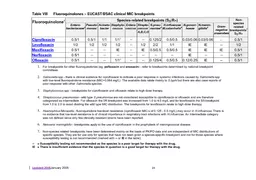Bristol Energy Sale: Our Rights & How to Use Them
Author : tatyana-admore | Published Date : 2025-06-23
Description: Bristol Energy Sale Our Rights How to Use Them UNISON South West Webinar We will be looking at The situation for Bristol Energy Staff Legal rights and employer responsibilities Being transferred to a new employer TUPE How redundancy
Presentation Embed Code
Download Presentation
Download
Presentation The PPT/PDF document
"Bristol Energy Sale: Our Rights & How to Use Them" is the property of its rightful owner.
Permission is granted to download and print the materials on this website for personal, non-commercial use only,
and to display it on your personal computer provided you do not modify the materials and that you retain all
copyright notices contained in the materials. By downloading content from our website, you accept the terms of
this agreement.
Transcript:Bristol Energy Sale: Our Rights & How to Use Them:
Bristol Energy Sale: Our Rights & How to Use Them UNISON South West Webinar We will be looking at… The situation for Bristol Energy Staff Legal rights and employer responsibilities Being transferred to a new employer (TUPE) How redundancy works Organising together in UNISON The Current Situation Bristol Council announced sale at start of June Currently reviewing bids from potential buyers Could choose company that keeps on staff, or only keeps customers BE staff joining together in a union, to persuade Council to sell to a buyer who will keep jobs & to prioritise your welfare Depending on who Council sells to, will be job transfers and/or redundancies Legal Rights and Collective Action Your employer has some legal responsibilities However, the law is the absolute minimum required It can be vague & often isn’t fair for staff Cannot rely on the law alone, but can use it alongside your strength in numbers The more of you working together in a union, the more you can influence your employer This works. Transfer of Undertakings (Protection of Employment) Regulations – TUPE Temporarily protects employee’s terms and conditions when a business is transferred (whole or in part) from one owner to another. When one employer replaces another Outsourcing, bringing work back in house, bail-outs. Key question is ‘does that group of employees end up with a different employer?’ What’s protected during the transfer? Length of service Basic terms and conditions – wages, holidays etc Protection against dismissal (if employed for more than two years). Negotiated agreements (pay rises etc.) Trade union rights What’s not protected? Pensions – though all employers now have to have a pension scheme that you can transfer into. However, your accrued pension rights operated by the previous employer are protected during the transfer. What does an employer need to do? Consult and provide information to trade unions/employee representatives Inform employees affected Give information to the new employer The new employer can try to make changes after the transfer, but must give notice and consult What rights do you have? Redundancy – Definition What does an employer have to do? Consult staff – individually and through elected reps. Explain reasons for redundancies and selection criteria Have a fair selection criteria that complies with Equality Law Consider alternative employment and allow trial periods Give time off for job seeking (2 years+ employment) Clearly state how redundancy payments are calculated Comply with














